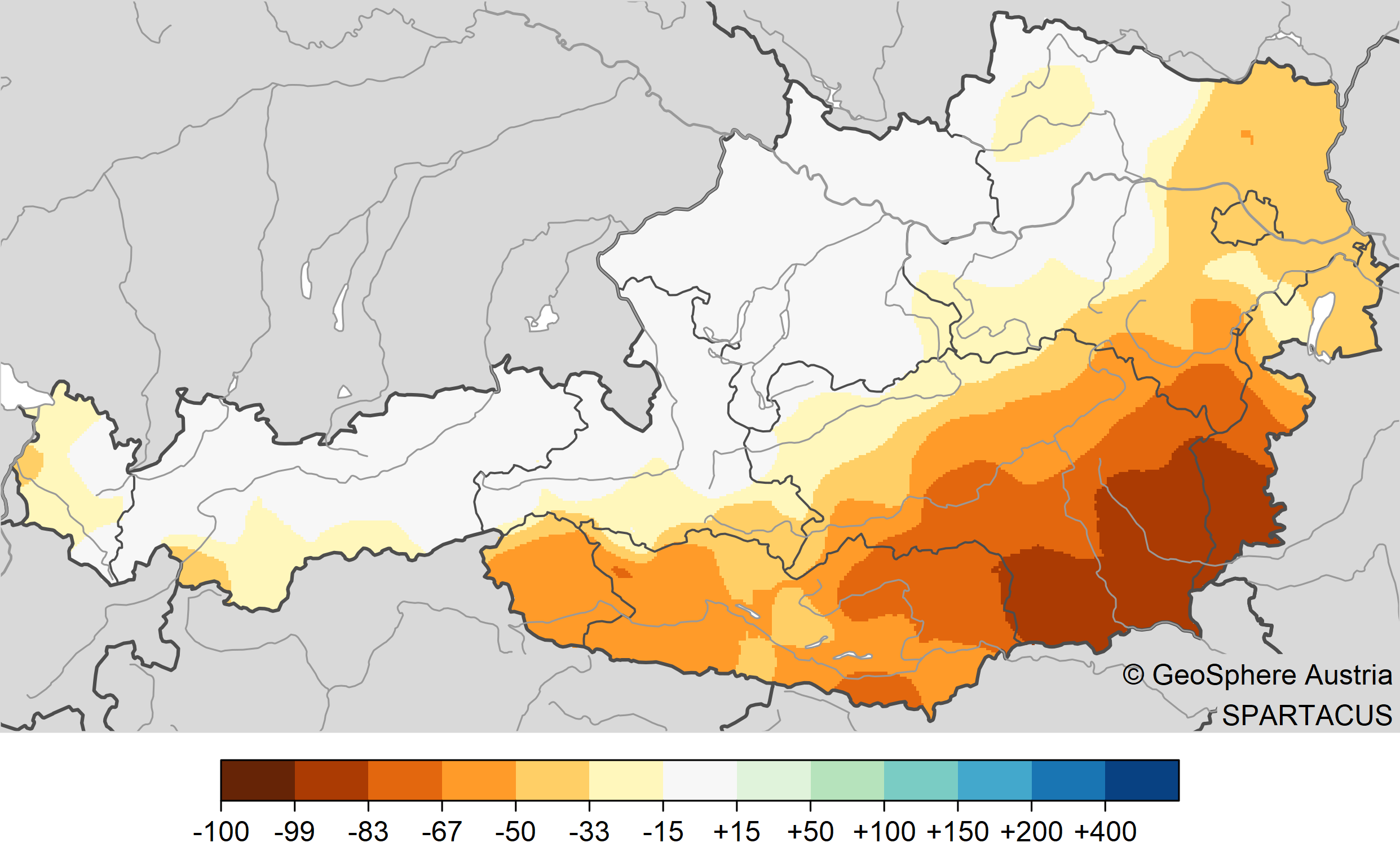December 2024: dry, sunny and relatively mild
Preliminary climate balance after the first evaluation of the measurement data and including the forecasts until the end of the month.
"December 2024 was 1.0 degrees warmer in Austria's lowlands and on the mountains than an average December in the 1991 to 2020 climate period," says climatologist Alexander Orlik from GeoSphere Austria, "which puts Austria's lowlands in 42nd place in the series of the warmest December in the 258-year measurement history and the mountains in 31st place in the 174-year mountain measurement series."
Compared to the 1961 to 1990 climate period, December 2024 was 2.1 degrees above average in the lowlands and 1.9 degrees above average in the mountains.
The highest temperature in December 2024 was 16.4 degrees, measured on 16 December in Gleisdorf (ST, 377 m above sea level) and on 19 December in Kernhof-St. Aegyd (N, 678 m).
The lowest temperature in the GeoSphere Austria monitoring network was measured at -22.6 degrees on 23 December at Brunnenkogel (T, 3437 m).
Averaged over the entire area of Austria, 35 per cent less precipitation fell than in an average December. This made it the driest December since 2016.
The regional analysis shows major differences: In the west and north of Austria, the occasional fronts moving in from the Atlantic brought reasonably average amounts of precipitation (-25 to +25 per cent compared to the mean). In the east and south of Austria, on the other hand, it was far too dry. In East Tyrol, Carinthia and parts of Styria and Burgenland, for example, there was 50 to 75 per cent less precipitation than in an average December, in some places by as much as 90 per cent.
The number of days with snow cover in the mountains from Arlberg to Ausseerland was around the long-term average. Further east and south in Austria, this was only the case from around 1000 metres above sea level.
Away from the Alps, there was significantly less snow everywhere than in an average December. The slightly higher altitudes, such as the Mühlviertel and the Waldviertel, recorded 50 to 80 per cent fewer days with snow cover. Below 500 metres above sea level, there was almost no snow at all, whereas in an average December there are around seven days with snow cover.
Averaged over the whole of Austria, the number of hours of sunshine in December 2024 was 23 per cent above the long-term average. This made it one of the ten sunniest Decembers in the 100-year sunshine measurement series.
The regional analysis shows major differences: In Vorarlberg, parts of North Tyrol and Salzburg, the number of hours of sunshine was largely in line with the long-term average. In the Innviertel region, there were often persistent patches of fog and 10 to 50 per cent fewer hours of sunshine than the average. The south and east of Austria, on the other hand, were very sunny and recorded 30 to 50 per cent more hours of sunshine than average, in some cases up to 80 per cent.
Translated with DeepL.com (free version)

